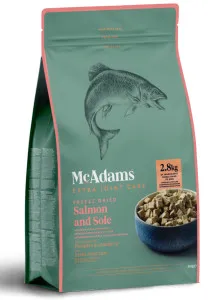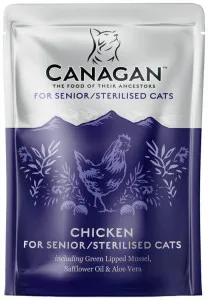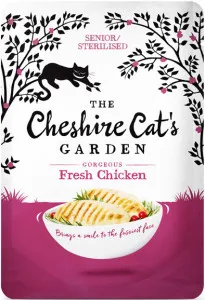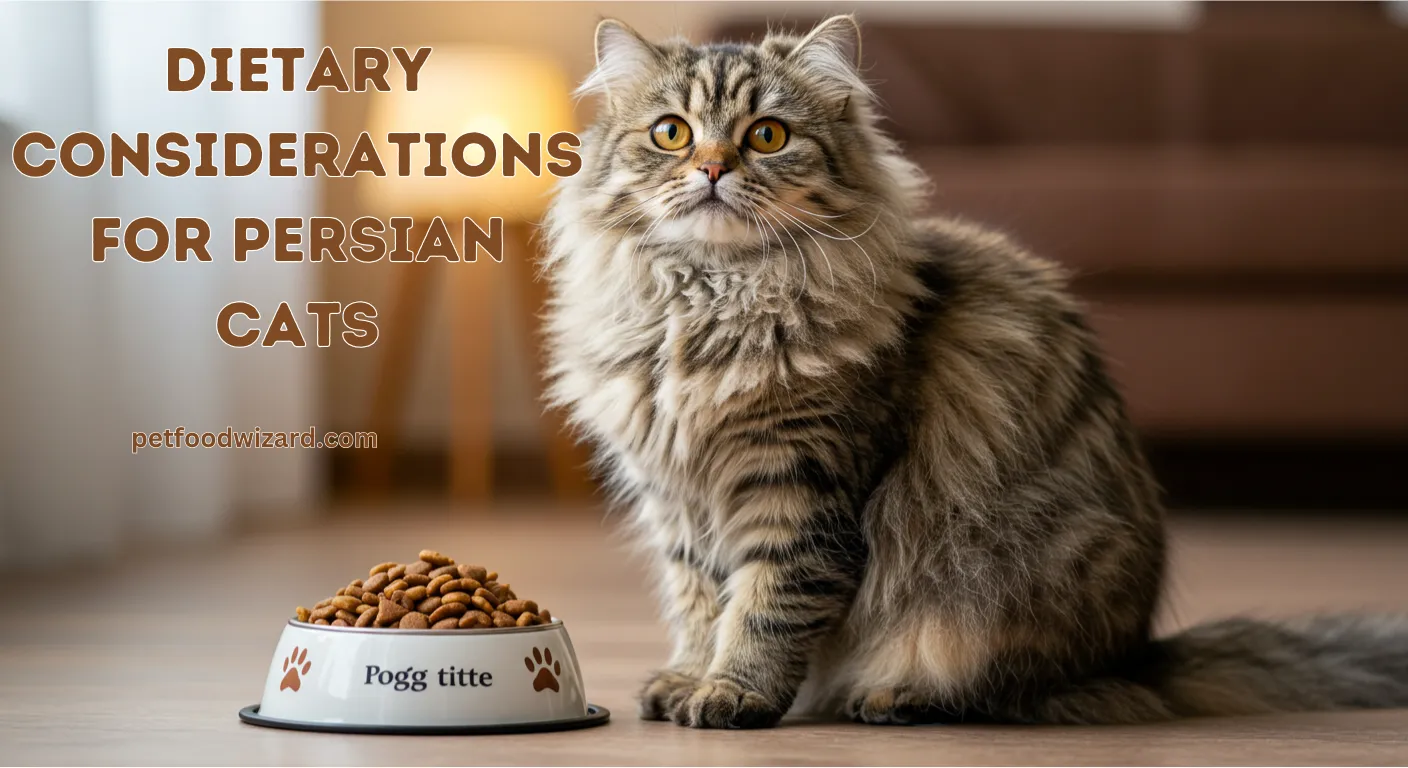Dietary Considerations for Persian Cats
Persian cats are one of the most beloved and recognizable cat breeds, known for their luxurious coats, sweet personalities, and expressive faces. However, their unique physical characteristics and genetic predispositions mean they have specific dietary needs that must be met to ensure they live long, healthy lives. Whether you’re a new Persian cat owner or a seasoned feline enthusiast, understanding the right dietary considerations for Persian cats is essential.
Understanding the Unique Needs of Persian Cats
Persian cats are distinct in many ways, and their diet should reflect their unique requirements. Their flat faces, for example, can make eating certain types of food more challenging. Additionally, their long, thick coats require proper nutrition to stay healthy and shiny. Here are some key factors to consider when planning your Persian cat’s diet:
- Flat-Faced Structure: Persian cats have brachycephalic (flat-faced) features, which can make it difficult for them to pick up and chew certain types of food. Wet food or specially designed kibble is often easier for them to eat.
- Coat Health: Their long, dense fur requires a diet rich in omega-3 and omega-6 fatty acids to maintain its luster and prevent matting.
- Weight Management: Persian cats are prone to obesity, so portion control and a balanced diet are crucial.
- Kidney Health: Persian cats are genetically predisposed to polycystic kidney disease (PKD), so a diet that supports kidney function is important.
- High-Quality Protein: Cats are obligate carnivores, meaning they require animal-based protein to thrive. Look for cat food with real meat as the primary ingredient.
- Healthy Fats: Omega-3 and omega-6 fatty acids are essential for maintaining a healthy coat and skin. These can be found in fish oil, flaxseed, and chicken fat.
- Vitamins and Minerals: Vitamins like A, D, and E, as well as minerals like calcium and phosphorus, are vital for overall health.
- Hydration: Persian cats are not always great drinkers, so wet food or adding water to dry food can help keep them hydrated.
- Wet Food: Wet food is often easier for Persian cats to eat due to their flat faces. It also provides much-needed hydration, which is especially important for cats prone to kidney issues. However, it can be more expensive and less convenient than dry food.
- Dry Food: Dry food is convenient and can help keep your cat’s teeth clean. However, it’s important to choose a high-quality brand that’s specifically designed for Persian cats, as some kibble may be too hard for them to chew.
- Weight Management: Persian cats are prone to obesity, so it’s important to monitor their calorie intake and ensure they get regular exercise. Avoid overfeeding and opt for portion-controlled meals.
- Kidney Health: Since Persian cats are at risk for PKD, a diet low in phosphorus and sodium can help support kidney function. Look for cat food formulas designed for kidney health.
- Hairball Control: Persian cats are notorious for hairballs due to their long fur. A diet with added fiber can help reduce hairball formation.
- Food Allergies: Some Persian cats may have food allergies or sensitivities. If your cat shows signs of itching, digestive issues, or skin problems, consider switching to a hypoallergenic diet.
- Use High-Quality Ingredients: Choose fresh, human-grade meats, vegetables, and grains.
- Supplement as Needed: Homemade diets often require additional supplements to ensure your cat gets all the necessary vitamins and minerals.
- Avoid Toxic Foods: Some foods, like onions, garlic, and chocolate, are toxic to cats and should never be included in their diet.
- Read the Ingredients: Look for cat food with real meat as the first ingredient and avoid products with fillers like corn and soy.
- Check for AAFCO Approval: The Association of American Feed Control Officials (AAFCO) sets nutritional standards for pet food. Choose a product that meets AAFCO guidelines.
- Consider Your Cat’s Age and Health: Kittens, adult cats, and senior cats have different nutritional needs. Choose a formula that’s appropriate for your cat’s life stage.
- Consult Reviews and Tools: Use resources like the Pet Food Analyzer to compare different brands and read reviews from other cat owners.
- Stick to a Schedule: Feed your cat at the same times each day to establish a routine.
- Monitor Portion Sizes: Overfeeding can lead to obesity, so be mindful of portion sizes and avoid free-feeding.
- Provide Fresh Water: Always ensure your cat has access to fresh, clean water.
- Watch for Changes: If your cat’s eating habits or weight change suddenly, consult your veterinarian.
Essential Nutrients for Persian Cats
To keep your Persian cat healthy, their diet should include a balance of essential nutrients. Here’s a breakdown of what your Persian cat needs:
Wet Food vs. Dry Food: What’s Best for Persian Cats?
One of the most common debates among cat owners is whether to feed their pets wet food or dry food. For Persian cats, both options have their pros and cons:
Many Persian cat owners opt for a combination of both wet and dry food to provide a balanced diet. If you’re unsure which option is best for your cat, consult your veterinarian or use a tool like the Pet Food Analyzer to compare different brands and formulas.
Special Dietary Considerations for Persian Cats
In addition to their basic nutritional needs, Persian cats may require special dietary considerations based on their health and lifestyle. Here are some factors to keep in mind:
Recommended Products

McAdams Freeze Dried Salmon & Sole is an excellent choice for dietary considerations for persian cats. This cat food contains Sustainably Sourced Salmon 60% and other high-quality ingredients that promote overall health.

Canagan Senior/Sterilised is an excellent choice for dietary considerations for persian cats. This cat food contains Fresh Chicken 80% and other high-quality ingredients that promote overall health.

The Cheshire Cat's Garden Senior Sterilised is an excellent choice for dietary considerations for persian cats. This cat food contains Fresh Chicken 80% and other high-quality ingredients that promote overall health.
Homemade Diets for Persian Cats
Some cat owners prefer to prepare homemade meals for their Persian cats. While this can be a great way to ensure your cat gets high-quality ingredients, it’s important to do so under the guidance of a veterinarian. A homemade diet must be carefully balanced to provide all the essential nutrients your cat needs. Here are some tips for preparing homemade meals:
If you’re considering a homemade diet, consult your veterinarian to create a meal plan that meets your Persian cat’s specific needs.
Choosing the Right Cat Food
With so many cat food options on the market, choosing the right one for your Persian cat can be overwhelming. Here are some tips to help you make an informed decision:
Feeding Tips for Persian Cats
Once you’ve chosen the right food for your Persian cat, it’s important to establish a feeding routine that works for both of you. Here are some tips to keep in mind:
Conclusion
Feeding your Persian cat a balanced, nutritious diet is one of the best ways to ensure they live a long, healthy, and happy life. By understanding their unique needs and choosing the right food, you can help your feline friend thrive. Whether you opt for wet food, dry food, or a homemade diet, the key is to provide a diet that’s rich in essential nutrients and tailored to their specific requirements.
If you’re unsure where to start, the Pet Food Analyzer is a great resource to compare different cat food options and find the perfect fit for your Persian cat. Remember, a healthy diet is the foundation of a happy and vibrant life for your furry companion.
